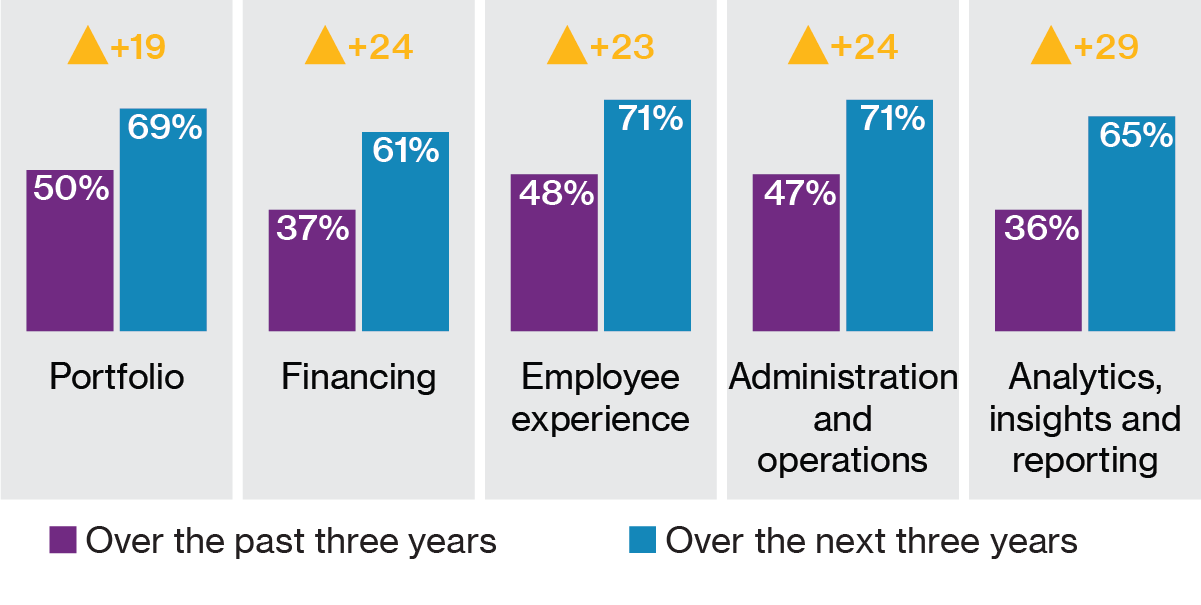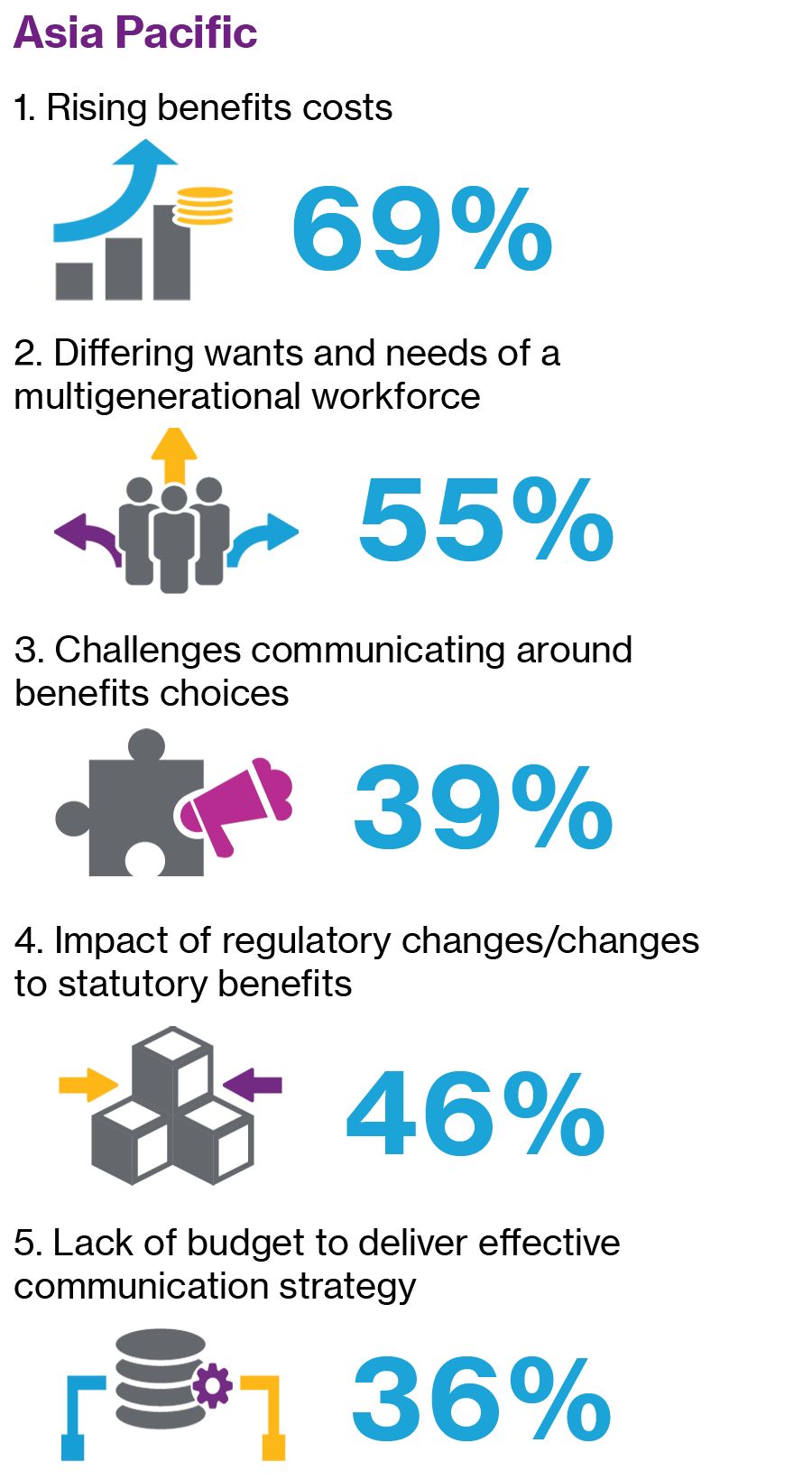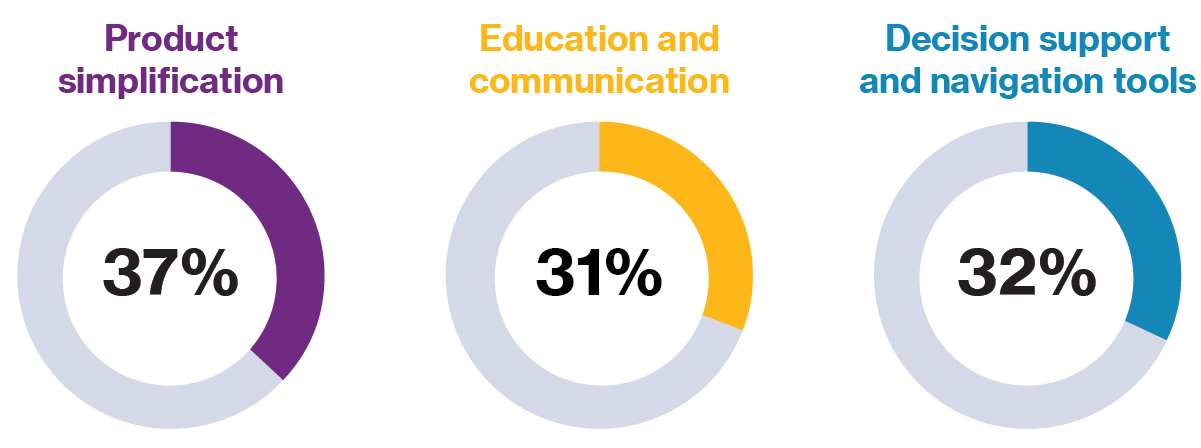Modernising Benefits in Asia Pacific – Part 4
When designing or modernising a benefits program, it is crucial for employers to consider the employee experience — that is, how employees perceive and interact with their benefits. If this angle is not thought through, employers run the risk of employees undervaluing (or worse, not being aware of) even the most relevant and competitive packages. This can represent a significant loss of resources, whether cost or time, and is also an opportunity cost in terms of the potential gains in engagement and employer reputation.
In this article, we will highlight the employee experience as a factor in optimising the value of the benefits package, and how employers can effectively use it as an engagement tool.
This is the fourth of a six-article series on modernising benefits, in which we look at how benefits can be designed and delivered using a holistic, integrated approach outlined in the Benefits Navigator.

An operating model to make, execute and monitor strategic decisions related to benefit programs.
More and more employers in Asia Pacific are recognising the importance of the employee experience when it comes to an organisation’s overall benefits strategy.
A recent survey found that close to three-quarters of employers in Asia Pacific are looking to increase their focus on this in the next three years.1 The employee experience drives employee engagement, in turn increasing the value that employers and employees alike stand to gain from the benefits spend.

Source: Willis Towers Watson 2019/2020 Benefit Trends Survey – Asia Pacific
Three aspects of the benefit portfolio have a direct impact on the employee experience – design, funding, and delivery.
Creating a positive employee experience starts with understanding the workforce, so that key concerns of employees can be addressed. These concerns will vary according to different groups — and this challenge is particularly acute today. Employers are dealing with multiple generations of employees, from those entering the workforce (Gen Z) to baby boomers nearing retirement (and some already past the age of retirement but continuing to work due to financial pressures or other reasons).
In fact, our 2019/2020 Benefit Trends Survey found that alongside costs, addressing the needs of a multigenerational workforce was a leading challenge employers face today when it comes to their benefit programs.

Source: Willis Towers Watson 2019/2020 Benefit Trends Survey – Asia Pacific
In Asia Pacific, less than half of employers believe their benefits package is tailored to meet the specific needs of their workforce and only a minority believe that their benefits are truly effective. One reason for this could be that benefits are now challenged to do more — from a purely traditional concept of ‘core’ benefits such as pensions and insurance, benefits now cover an evolving array of other employee needs, from wellbeing to flexible work, a focus on diversity and inclusion, and so on.
Leading employers are moving away from one-size-fits-all plans, and instead designing benefits according to the needs of the workforce.
Segmentation is key to understanding and offering the benefits that employees value the most, and employers must take the time to understand these differences as they modernise their programs.
Surveys, focus groups, polls and other tools are a helpful starting point to better understand the workforce. The results can provide employers with a clear overview of the makeup of their workforce and their priorities.
Employees want the freedom to choose the benefits that matter most to them, rather than accept a generic program they don’t see value in.
Flexibility and choice of benefits are not new innovations. But with the right tools and support, they are key to driving a positive employee experience. Employees increasingly want the freedom to choose the benefits that matter most to them, rather than accept a generic program they don’t see value in. Employees appreciate having control over their benefits and are more engaged and happier as a result. Over a third of organisations in Asia Pacific recognise this and are prioritising broader or more flexible benefit programs.
Simplification is an important part of this process. It is easy for employees to become overwhelmed or confused by unfamiliar or irrelevant benefit options. Our research found over a third of Asia Pacific employers (37%) said that a top priority is to reduce this type of complexity by narrowing benefit choices to a small but meaningful set of options.

Source: Willis Towers Watson 2019/2020 Benefit Trends Survey – Asia Pacific
Experiences on social media and various internet platforms have created an expectation of on-demand access to information among younger employees, with push notifications and personalised messaging changing how employees define a positive experience.
The rapid evolution of technology and automation is powering a shift in benefit design. Next-generation solutions make it possible to design flexible, choice-driven benefit packages, without a significant increase in administrative effort and costs. Technology also opens the gate to gathering and analysing more actionable data. This helps organisations better tailor their offerings to the needs of their workforce, and understand what initiatives are driving engagement.
It’s important to recognise the emotional side of the employee experience when designing a benefits plan.
When designing a benefits plan, it’s also important to recognise the emotional side of the employee experience. Connecting benefits to the human factor demonstrates that the employer understands the needs and values of their people. For organisations with a multigenerational workforce, there should be benefit packages tailored to specific considerations such as gender, age profile and family structure. At the same time, these packages should still have flexibility built in so employees can choose based on the benefits most relevant to them and their specific situation.
To read more about how to generate a positive benefits experience with the right implementation tools, funding, delivery and communication, please download the full pdf version of this article below.
1 Willis Towers Watson 2019/2020 Benefit Trends Survey — Asia Pacific
| Title | File Type | File Size |
|---|---|---|
| Modernising Benefits in Asia Pacific - Part 4 | .7 MB |